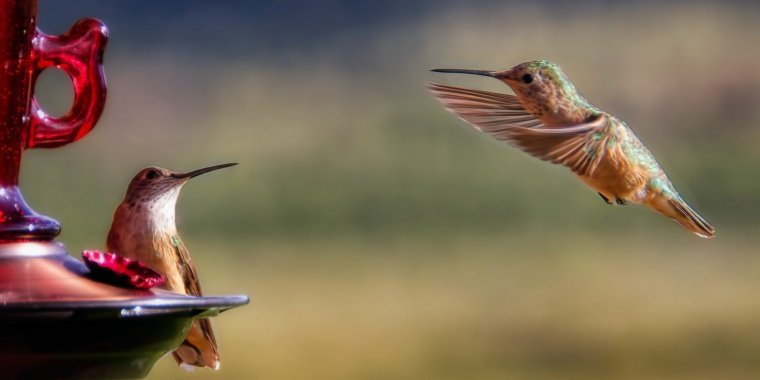| News / Science News |
Hummingbirds can see colors humans can only imagine
Hummingbirds can perceive colors that the human eye cannot, thanks to the addition of an extra cone in the hummingbird's eye that we don't possess.

Hummingbirds can see colors humans can only imagine. Photo: Claud Richmond/Unsplash
The findings, demonstrated in experiments with wild broad-tailed hummingbirds (Selasphorus platycercus) in Colorado, suggest that the ability to discriminate non-spectral colors (including ultraviolet wavelengths) could play a vital role in behaviors including mating, feeding, and evading predators.
Unlike humans, who have three kinds of color-sensitive cone cells in our eyes, birds have four types of cone cells that help them to process the differences between different kinds of colors. With three cones, human eyes can perceive what's known as trichromatic color, made up from a neural blend of red, green, and blue light.
Thanks to that process, our brains can perceive the non-spectral color purple (because it's a combination of blue and red). But animals with an extra cone can see an even greater spectrum of colors by being sensitive to more kinds of light wavelengths - opening the door to other kinds of color combinations that we can't see or even... imagine.
"Humans are color-blind compared to birds and many other animals," says evolutionary biologist Mary Caswell Stoddard from Princeton University.
"Not only does having a fourth color cone type extend the range of bird-visible colors into the UV, it potentially allows birds to perceive combination colors like ultraviolet+green and ultraviolet+red – but this has been hard to test."
It's thought that birds, with their extra cone cell, may be able to perceive as many as five non-spectral colors, including purple, ultraviolet+red, ultraviolet+green, ultraviolet+yellow, and ultraviolet+purple.
To test this, Caswell and her team set up 'bird vision' LED tubes programmed to display a number of colors, including the non-spectral colors that humans cannot see. These devices were then placed beside water-feeders, some of which contained sugar water (which the birds like) next to one color, while others contained plain water next to a different color.
They would then swap the positions of these feeders and see if the birds could use the color indicator to tell which feeder was which.
In a series of randomized experiments over three years (involving thousands of feeding sessions), the goal was to see if the hummingbirds showed a preference to feed at the water stations displaying the ultraviolet color combinations, which would support that they could see them, even if humans can't.
As it turns out, the animals could, easily distinguishing between the different kinds of non-spectral colors to obtain a sweet reward.
"The ultraviolet+green light and green light looked identical to us, but the hummingbirds kept correctly choosing the ultraviolet+green light associated with sugar water. Our experiments enabled us to get a sneak peek into what the world looks like to a hummingbird."
While we humans with our puny human eyes can't really understand what these color variations look like to the animals, the results suggest there is a discernible difference - as far as birds are concerned - between ultraviolet, red, and ultraviolet+red, with the same going for ultraviolet+green, ultraviolet+yellow, and ultraviolet+purple.
We might not be able to see or understand it, but the hummingbird can.
In another experiment, the researchers analyzed almost 1,000 different kinds of bird plumage, and almost 2,400 different kinds of plants, and found that the colors of about one-third of each would be perceived as a non-spectral color – indicating just how much this visual ability could affect their interactions with the world.
"These results are consistent with the claim that birds are tetrachromats, such that the avian color space represents a vast range of behaviorally and ecologically relevant colors, many of which humans (or any trichromat) cannot even imagine," the researchers explain in their paper.
"Does UV+green appear to birds as a mix of those colors (analogous to a double-stop chord played by a violinist) or as a sublime new color (analogous to a completely new tone unlike its components)? We cannot say," the authors write, noting that pondering this unanswerable question about unseeable colors is purely a human burden. (Tasnim News Agency)
YOU MAY ALSO LIKE





